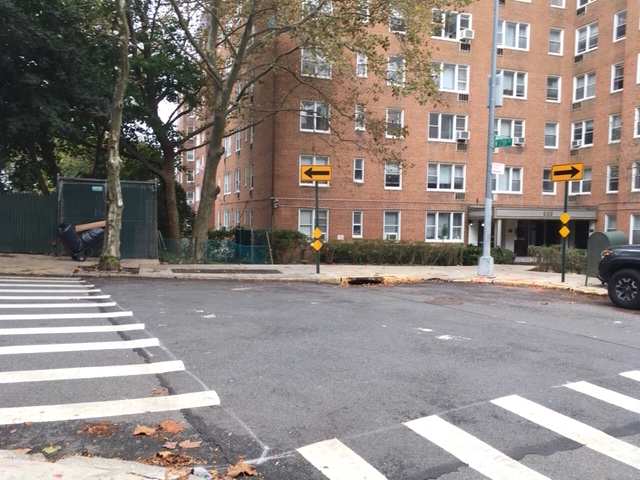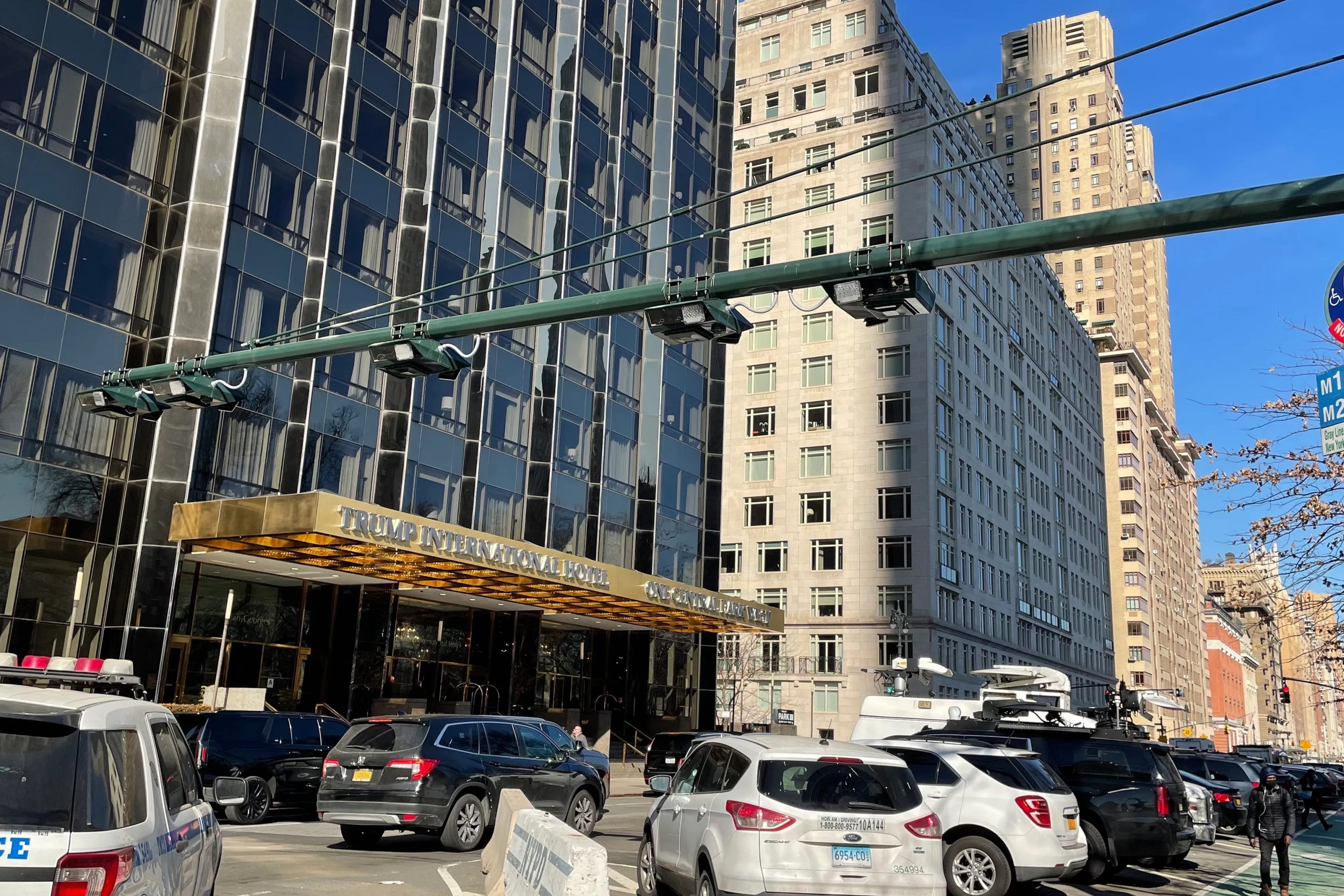Never have I felt more ashamed of my neighbors: Some 150 of them expressly prefer free parking over public safety.
That's the number of people who signed a petition demanding that the Department of Transportation rip up the crosswalks, curb extensions, signage and other safety measures it put in place this summer at intersections on my street, Hudson Manor Terrace in the Riverdale section of the Bronx. Instead, the 150 want a return of 14 free parking spaces DOT removed between West 236th to West 239th streets for the safety improvements.
My neighbors have short memories. In November, 1996, a driver killed 6-year-old Turner Soloway as he crossed Hudson Manor Terrace. The child likely would still be among us if DOT's safety improvements had been in place back then.
Which leads to another reason I feel ashamed. Why did it take 23 years — a generation — before the department acted to create safe crossings on this deadly street?
More shame: Our local newspaper, The Riverdale Press, did not even mention the death of the 6-year-old in its report about the crosswalk controversy — even after my son, who was interviewed for the story, told the reporter about it. The editors nonsensically titled the story, “The Case of the Purloined Parking,” suggesting that the space along the curb automatically belongs and should not be treated for what it actually is: part of the public right of way that can be allocated however the public chooses.
For my part, I choose safety.
Local Community Board 8 approved DOT's plan for crosswalks on Hudson Manor Terrace by a lopsided vote of 30 to 0, with one abstention. Yet some of the board's fauxgressive members have since been falling all over themselves denouncing the city for taking life-saving measures and are competing with each other to sound the most bellicose on parking, according to The Press. The Traffic and Transportation Committee will devote part of its meeting on Thursday, Oct. 17, to hearing the complaints. The same committee recently opposed offering its neighbors better alternatives to driving, in the form of part-time bus lanes that would speed traffic down on Broadway for almost 40,000 daily riders.
The city had to make the crosswalk changes on Hudson Manor Terrace, which it did at the urging of other residents who are not so selfishly concerned about free vehicle storage. As DOT's presentation to the community board noted, the crosswalks are "school safety improvements." A short street — only a few blocks long — lined with 1950s, red-brick apartment houses, Hudson Manor Terrace nonetheless serves as a major pedestrian thoroughfare connecting two schoolyards with parks, playgrounds and ballfields — and it literally teems with children going to and from the schools and the parks.
Many elderly people also stroll on Hudson Manor Terrace, because Riverdale is a “naturally occurring retirement community,” in the social-services parlance. On the Jewish Sabbath, in particular, people push strollers with babies or walk with toddlers to Seton Park, often accompanied by grandparents in a grand procession of the generations. Hudson Manor Terrace, in fact, is a good candidate for the kind of pedestrianization that would remove parking altogether. It is not a through street and has no metered parking or commerce anywhere near it.
DOT said that there have been no traffic injuries on Hudson Manor Terrace during the five-year period from 2013 to 2017, and no fatalities since 2013. Two motor vehicle collisions during the period did not result in injury.
So it's not as if the area is unsafe. But storage of privately owned cars in the public right of way is not the "right" of motorists — as the signers of the petition claim — but a public subsidy foolishly given to car drivers. In this case, that subsidy amounts to about $200 per car per month, or $2,400 per space annually, which is around what it costs to garage a car locally.
Why should Riverdalians subsidize 14 lucky drivers to the tune of $33,600 annually — rather than use life-saving crosswalks?

In 2001, when I moved to Hudson Manor Terrace from another part of Riverdale, memories of Turner Soloway’s death were still fresh. People asked me if I felt comfortable living on a street on which a child had died. In real estate-conscious Riverdale, some even insinuated that the dangerous street might affect the value of my apartment. Now, the pro-parking faction claims without merit in the petition that the crosswalks “have weakened any future saleability of our homes.”
I took precautions: My children were 8 and 6 at the time, and I did not let them walk to the parks by themselves. We lived in fear of cars.
It’s sickening to think that New Yorkers — my neighbors — would rather endanger their children and neighbors than give up some free parking.
How many parking spaces is the life of a child worth?
UPDATE: Because of a lack of a quorum at its October 17 meeting, Bronx Community Board 8's Traffic & Transportation Committee pushed ahead any action about the crosswalks until its next meeting, on November 21. The meeting's venue is to be determined.






